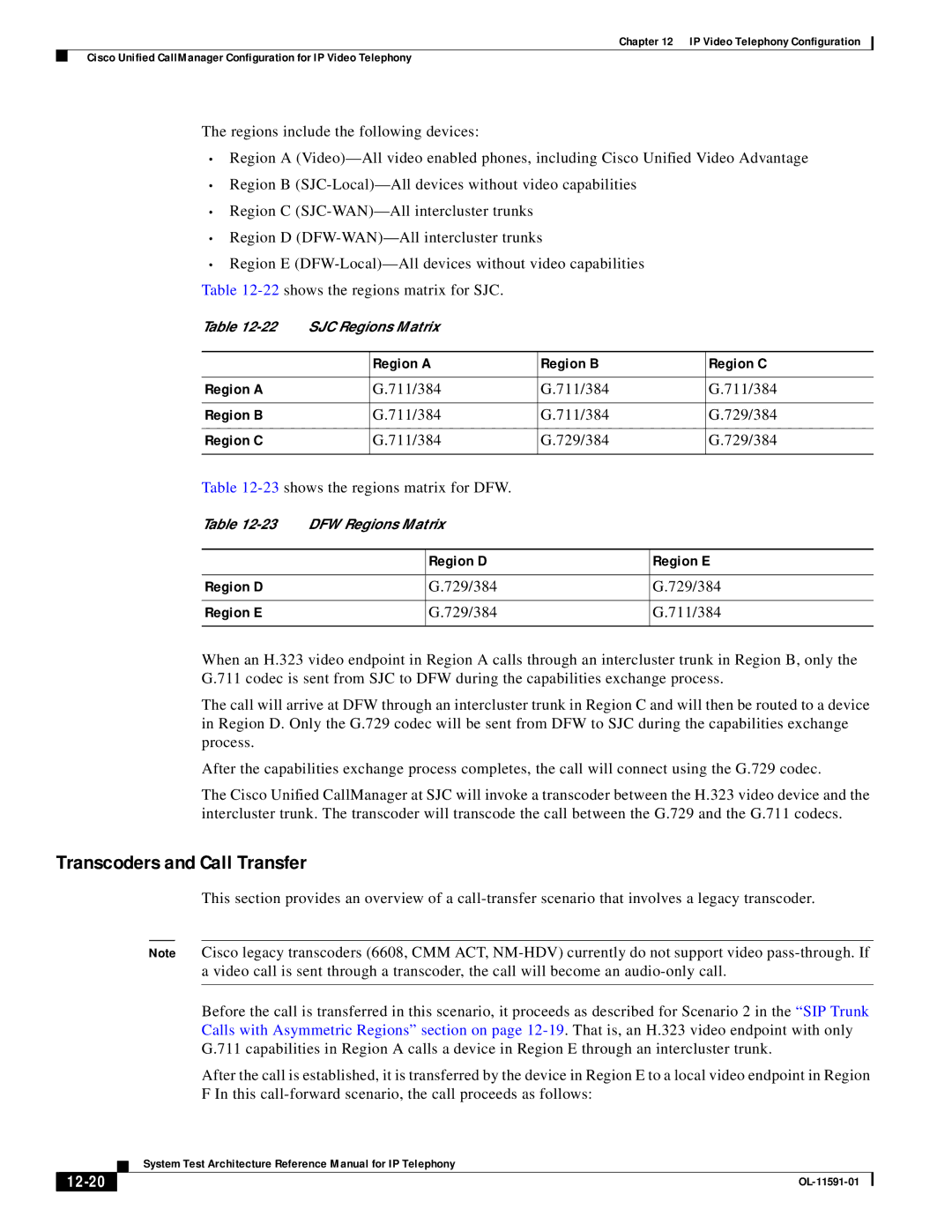
Chapter 12 IP Video Telephony Configuration
Cisco Unified CallManager Configuration for IP Video Telephony
The regions include the following devices:
•Region A
•Region B
•Region C
•Region D
•Region E
Table
Table | SJC Regions Matrix |
|
| |
|
|
|
|
|
|
| Region A | Region B | Region C |
|
|
|
|
|
Region A |
| G.711/384 | G.711/384 | G.711/384 |
|
|
|
|
|
Region B |
| G.711/384 | G.711/384 | G.729/384 |
|
|
|
|
|
Region C |
| G.711/384 | G.729/384 | G.729/384 |
|
|
|
|
|
Table
Table | DFW Regions Matrix |
| |
|
|
|
|
|
| Region D | Region E |
|
|
|
|
Region D |
| G.729/384 | G.729/384 |
|
|
|
|
Region E |
| G.729/384 | G.711/384 |
|
|
|
|
When an H.323 video endpoint in Region A calls through an intercluster trunk in Region B, only the G.711 codec is sent from SJC to DFW during the capabilities exchange process.
The call will arrive at DFW through an intercluster trunk in Region C and will then be routed to a device in Region D. Only the G.729 codec will be sent from DFW to SJC during the capabilities exchange process.
After the capabilities exchange process completes, the call will connect using the G.729 codec.
The Cisco Unified CallManager at SJC will invoke a transcoder between the H.323 video device and the intercluster trunk. The transcoder will transcode the call between the G.729 and the G.711 codecs.
Transcoders and Call Transfer
This section provides an overview of a
Note Cisco legacy transcoders (6608, CMM ACT,
Before the call is transferred in this scenario, it proceeds as described for Scenario 2 in the “SIP Trunk Calls with Asymmetric Regions” section on page
After the call is established, it is transferred by the device in Region E to a local video endpoint in Region F In this
| System Test Architecture Reference Manual for IP Telephony |
|
